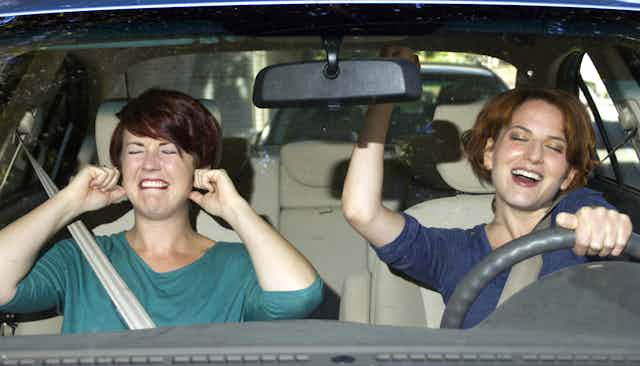Cars are still the favoured mode of transport in Australia, despite their known environmental and health impacts. We know that alternatives exist — walking, riding, and public transport — that can get us around in the same time. But recent research shows that travel time isn’t necessarily the priority for car commuters.
In Sydney, for example, travel by car continues to dominate mode-share for all trip purposes. In 2011, 68.1% of trips were made by private vehicles. For the commute to work, 62.8% of all journeys were made by car.
Perhaps even more telling is that the average Sydney household owns 1.54 cars, and for the first time in 2011 the number of Sydney households with three or more cars exceeded those without a car.
It is true that there are rumblings of change. Transport planners are perpetually keen to point out recent increases in the uptake of active and public transport. The data, however, suggests this change is specific to particular demographics and areas.
Sydney’s inner-urban residents, for example, use the car for 56% of trips, compared to their suburban counterparts who complete 74% of journeys by car. In short, despite the impossibilities of ongoing private car use, the rising costs and increased political and cultural focus on the need to change, car driving endures.
Need for speed?
There are many reasons thrown around for our ongoing attachment to private cars. Perhaps the most persuasive is that the car’s comparative speed, ability to cover distance and, by implication, time-saving capacity prevents the uptake of alternative transport use.
In this argument, people drive simply because it is the fastest way for them to get from A to B. But what if people could get to the same place in the same time using another mode of transport?
To answer this question, I tracked down a group of people working in outer suburban Sydney who could travel to work using alternative transport modes in the same amount of time as it currently takes them to drive.
I spoke to them about why they commute the way they do. I did their proposed alternative transport trip myself, firstly to prove that my method of trip substitution analysis was correct and secondly so I could speak with confidence when describing the trip to my study participants.
It turns out I shouldn’t have bothered - my participants already knew they had alternatives to their car journey that would take the same time. They just liked driving.
They used the car for many purposes. Many of these can be conceptualised as traditionally utilitarian: ferrying children and carting groceries, as well as micromanaging multiple time commitments to family, sport, study and secondary employment. Drivers found the car comfortable and cited the air-conditioning, aural concealment and protection from rain, wind, heat and darkness as the key motivators for using cars.
Emotional attachment
Reasons for driving, however, were also emotional. My study participants used the car as a place to keep in touch with the world via the radio, make confidential phone calls to family, friends and colleagues, listen to personal pieces of music otherwise deemed unacceptable by peers, as well as simply etch out time alone and still in lives shaped by rush and publicness.
This was reinforced by drivers’ underlying belief that to be comfortable, protected and autonomously mobile is a very basic right in modern society. Why? Perhaps these demands for privacy and comfort in the way we travel reflects perceived threats to these rights.
In the shift to higher density living, (a product of the need to accommodate more people in our cities), we are constantly challenged to share space. We share our footpaths and open spaces, our backyards and front foyers. We share our office space, and, for those working at a hot desk, even our office chair. The privacy and time-out afforded by the private car takes on new meaning when it is the last bastion of privacy in modern life.
Transport is more than getting from A to B
This qualitative research, recently published in the Journal of Transportation Research A, suggests people are not as interested in saving time as they are in being comfortable, cocooned in privacy and able to keep up with the requirements of their flexible and busy lives.
But transport planners continue to prioritise rational motives over more emotional reasons for driving. Perhaps this is because it is easier to explain our aversion to other forms of transport as due to time.
The findings of this study suggest that commuters are unlikely to sacrifice the comfort of the private car for a minor time saving. To stand for 35 minutes on a crowded train or bus twice daily, or to ride a bike in the wind and rain, is, for some people at least, physically unpleasant.
And to willingly endure such discomfort threatens deeply embedded cultural notions of freedom and autonomy. If we’re going to get more people out of cars, we’ll need to balance rational motives such as time with more emotional concerns.

